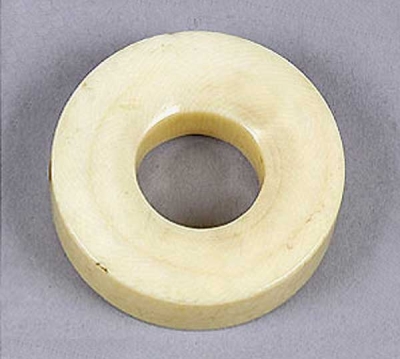Ivory thumbring (1954.6.185)
 TibetIvory thumbring from Tibet, Asia. Owned by Harry Geoffrey Beasley. Given to the Museum by his wife Irene Marguerite Beasley in 1954.
TibetIvory thumbring from Tibet, Asia. Owned by Harry Geoffrey Beasley. Given to the Museum by his wife Irene Marguerite Beasley in 1954.
The Manchu culture of the Chinese Qing Dynasty spread to Tibet in the 18th and 19th centuries. This elephant-ivory thumb ring is unusually thick, and not really of the true Manchu type. One reason for its unusual appearance may be that it represents the section of the tusk itself, which was left almost entire in its diameter for the sake of ostentation.
Another possibility is that this artefact may not be a thumbring at all. The wearing of large pieces of bone and ivory was a characteristic of 19th century Tibet, where it was believed by Tantric Buddhists to be one of the characteristics of 'fierce deities'. This may be such a piece.





